Tidal Energy Flows between the Midriff Islands in the Gulf of California
Abstract
1. Introduction
2. Study Area
3. Methodology
3.1. Numerical Model
3.2. Variable Vertical Quantification for Each Depth Section
3.3. Measurements on a Submerged Mooring
4. Results and Discussion
4.1. Numerical Results
4.2. Results of Field Measurements
5. Conclusions
Author Contributions
Funding
Institutional Review Board Statement
Informed Consent Statement
Data Availability Statement
Acknowledgments
Conflicts of Interest
References
- Badan-Dangon, A.; Hendershott, M.; Lavín, M.F. Underway Doppler current profiles in the Gulf of California. Eos Trans. AGU 1991, 72, 217–218. [Google Scholar]
- Fu, L.-L.; Holt, B. Internal waves in the Gulf of California: Observations from a spaceborne radar. J. Geophys. Res. 1984, 89, 2053–2060. [Google Scholar] [CrossRef]
- Apel, J.R.; Gonzalez, F.I. Nonlinear features of internal waves off Baja California as observed from the SEASAT imaging radar. J. Geophys. Res. 1983, 88, 4459–4466. [Google Scholar] [CrossRef]
- Howell, T.L.; Brown, W.S. Nonlinear internal waves on the California continental shelf. J. Geophys. Res. 1985, 90, 7256–7264. [Google Scholar] [CrossRef]
- Filonov, A.E. Internal tide and tsunami waves in the continentalshelf of the Mexican western coast. Oceanogr. East. Pac. 2000, 1, 31–45. [Google Scholar]
- Filonov, A.E.; Konyaev, K.V. Nonlinear Internal Waves Near Mexico’s Central Pacific Coast. In Nonlinear Processes in Geophysical Fluid Dynamics; Velasco Fuentes, O.U., Sheinbaum, J., Ochoa, J., Eds.; Springer: Berlin/Heidelberg, Germany, 2003. [Google Scholar] [CrossRef]
- Filonov, A.; Novotryasov, V. Features of the nonlinear internal wave spectrum in the coastal zone. Geophys. Res. Lett. 2005, 32, L15602. [Google Scholar] [CrossRef]
- AFilonov, A.; Novotryasov, V. On a spectrum of nonlinear internal waves in the oceanic coastal zone. Nonlinear Process. Geophys. 2007, 14, 757–762. [Google Scholar] [CrossRef]
- Osborne, A.R.; Burch, T.L. Internal Solitons in the Andaman Sea. Science 1980, 208, 451–460. [Google Scholar] [CrossRef]
- Da Silva, J.C.B.; Magalhaes, J.M. Internal solitons in the Andaman Sea: A new look at an old problem. In Proceedings of the Remote Sensing of the Ocean, Sea Ice, Coastal Waters, and Large Water Regions 2016, Edinburgh, UK, 19 October 2016; p. 999907. [Google Scholar] [CrossRef]
- Magalhaes, J.M.; Da Silva, J.C.B. Internal Solitary Waves in the Andaman Sea: New Insights from SAR Imagery. Remote Sens. 2018, 10, 861. [Google Scholar] [CrossRef]
- Magalhaes, J.M.; da Silva, J.C.B.; Buijsman, M.C. Long lived second mode internal solitary waves in the Andaman Sea. Sci. Rep. 2020, 10, 10234. [Google Scholar] [CrossRef]
- Alpers, W.; Vlasenko, V. Internal Waves in the Andaman Sea. In Remote Sensing of the Asian Seas; Barale, V., Gade, M., Eds.; Springer: Cham, Switzerland, 2019. [Google Scholar] [CrossRef]
- Apel, J.R.; Holbrook, J.R.; Liu, A.K.; Tsai, J.J. The Sulu Sea Internal Soliton Experiment. J. Phys. Oceanogr. 1985, 15, 1625–1651. [Google Scholar] [CrossRef]
- Zeng, K.; Alpers, W. Generation of internal solitary waves in the Sulu Sea and their refraction by bottom topography studied by ERS SAR imagery and a numerical model. Int. J. Remote. Sens. 2004, 25, 1277–1281. [Google Scholar] [CrossRef]
- Wunsch, C. Internal tides in the ocean. Rev. Geophys. 1975, 13, 167–182. [Google Scholar] [CrossRef]
- Filonov, A.E.; Lavín, M.F. Internal tides in the Northern Gulf of California. J. Geophys. Res. 2003, 108, 3151. [Google Scholar] [CrossRef]
- Paden, C.A.; Abbott, M.R.; Winant, C.D. Tidal and atmospheric forcing of the upper ocean in the Gulf of California: 1. Sea surface temperature variability. J. Geophys. Res. Space Phys. 1991, 96, 18337. [Google Scholar] [CrossRef]
- Hendershott, M.; Speranza, A. Co-oscillating tides in long, narrow bays; the Taylor problem revisited. Deep. Sea Res. Oceanogr. Abstr. 1971, 18, 959–980. [Google Scholar] [CrossRef]
- Filonov, A. Inclined internal tide waves at a narrow Mexican Pacific shelf. Ocean Dyn. 2011, 61, 917–931. [Google Scholar] [CrossRef]
- Ruvalcaba-Aroche, E.D.; Filonov, A.; Sánchez-Velasco, L.; Ladah, L.B.; Cruz-Hernández, J. Internal tidal waves in Tiburon Basin (Gulf of California, Mexico) modulate fish larvae aggregations. Cont. Shelf Res. 2019, 178, 41–50. [Google Scholar] [CrossRef]
- Filonov, A.; Tereshchenko, I.; Ladah, L.B.; Pantoja-Gonzalez, D.A.; Velázquez-Muñoz, F.A. High amplitude internal tidal waves generated over an underwater sill in the Gulf of California. Cont. Shelf Res. 2020, 210, 104290. [Google Scholar] [CrossRef]
- Mejia-Olivares, C.J.; Haigh, I.; Wells, N.; Coles, D.S.; Lewis, M.; Neill, S.P. Tidal-stream energy resource characterization for the Gulf of California, México. Energy 2018, 156, 481–491. [Google Scholar] [CrossRef]
- Magar, V.; Godínez, V.M.; Gross, M.S.; López-Mariscal, M.; Bermúdez-Romero, A.; Candela, J.; Zamudio, L. In-Stream Energy by Tidal and Wind-Driven Currents: An Analysis for the Gulf of California. Energies 2020, 13, 1095. [Google Scholar] [CrossRef]
- Blumberg, A.F.; Mellor, G.L. A description of a three-dimensional coastal ocean circulation model. Coastal Upwelling 1987, 4, 1–16. [Google Scholar]
- Argote, M.L.; Amador, A.; Lavín, M.F.; Hunter, J.R. Tidal dissipation and stratification in the Gulf of California. J. Geophys. Res. Space Phys. 1995, 100, 16103–16118. [Google Scholar] [CrossRef]
- Carbajal, N.; Backhaus, J.O. Simulation of tides, residual flow and energy budget in the Gulf of California. Oceanol. Acta 1998, 21, 429–446. [Google Scholar] [CrossRef][Green Version]
- García-Silva, E.D.; Filonovb, A.; Sánchez-Velasco, L.; Ladah, L.B.; Cruz-Hernándeza, J. Marinone, Tidal dynamics and energy budget in the Gulf of California. Cienc. Mar. 2000, 27, 323–353. [Google Scholar] [CrossRef]
- Marinone, S. Tidal currents in the gulf of california: Intercomparisons among two- and three-dimensional models with observations. Cienc. Mar. 2000, 26, 275–301. [Google Scholar] [CrossRef][Green Version]
- Konyaev, K.V.; Sabinin, K.D. Waves Inside the Ocean (in Russian); Hydrometeoizdat: St.-Petersburg, Russia, 1992; p. 272. [Google Scholar]
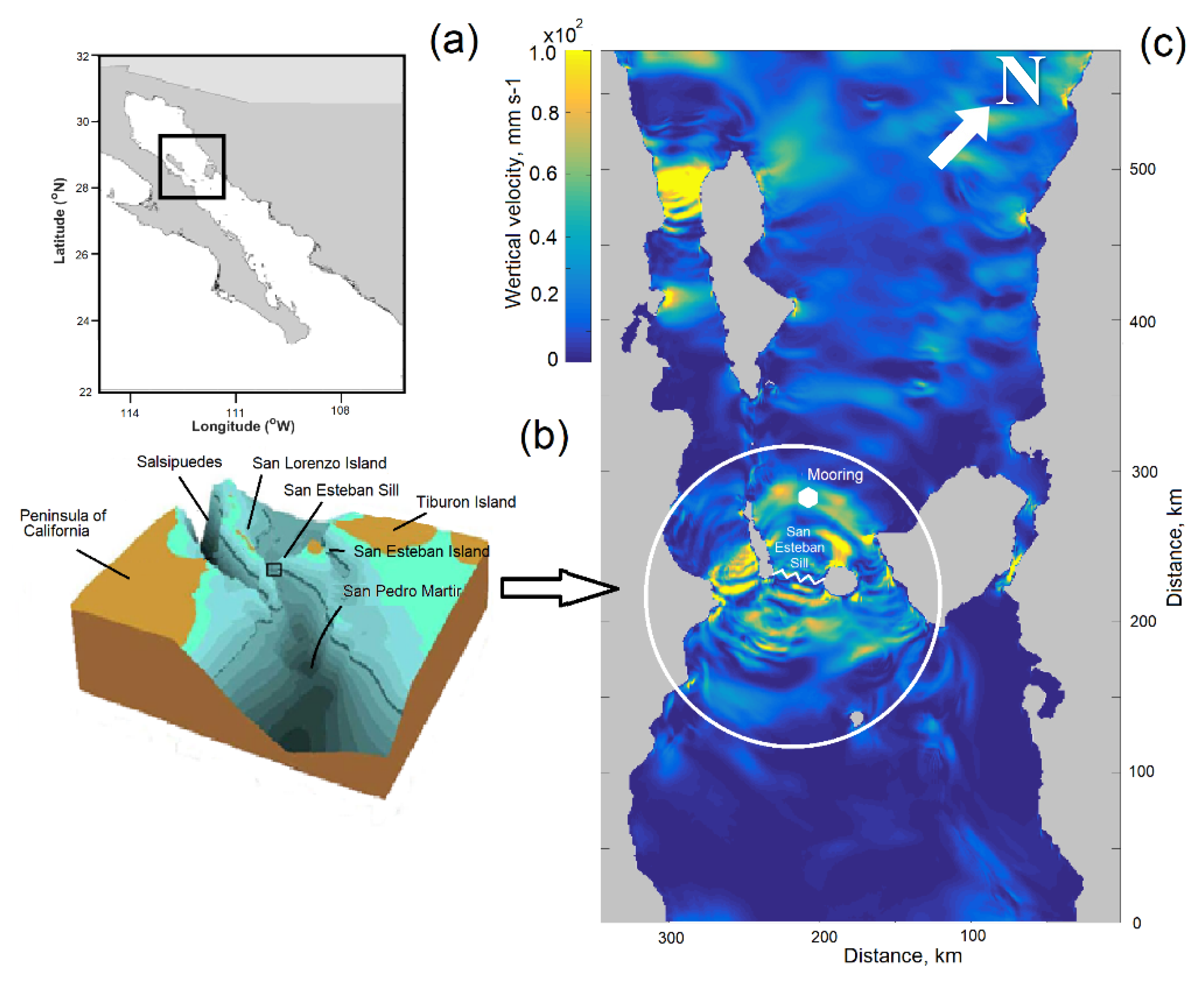
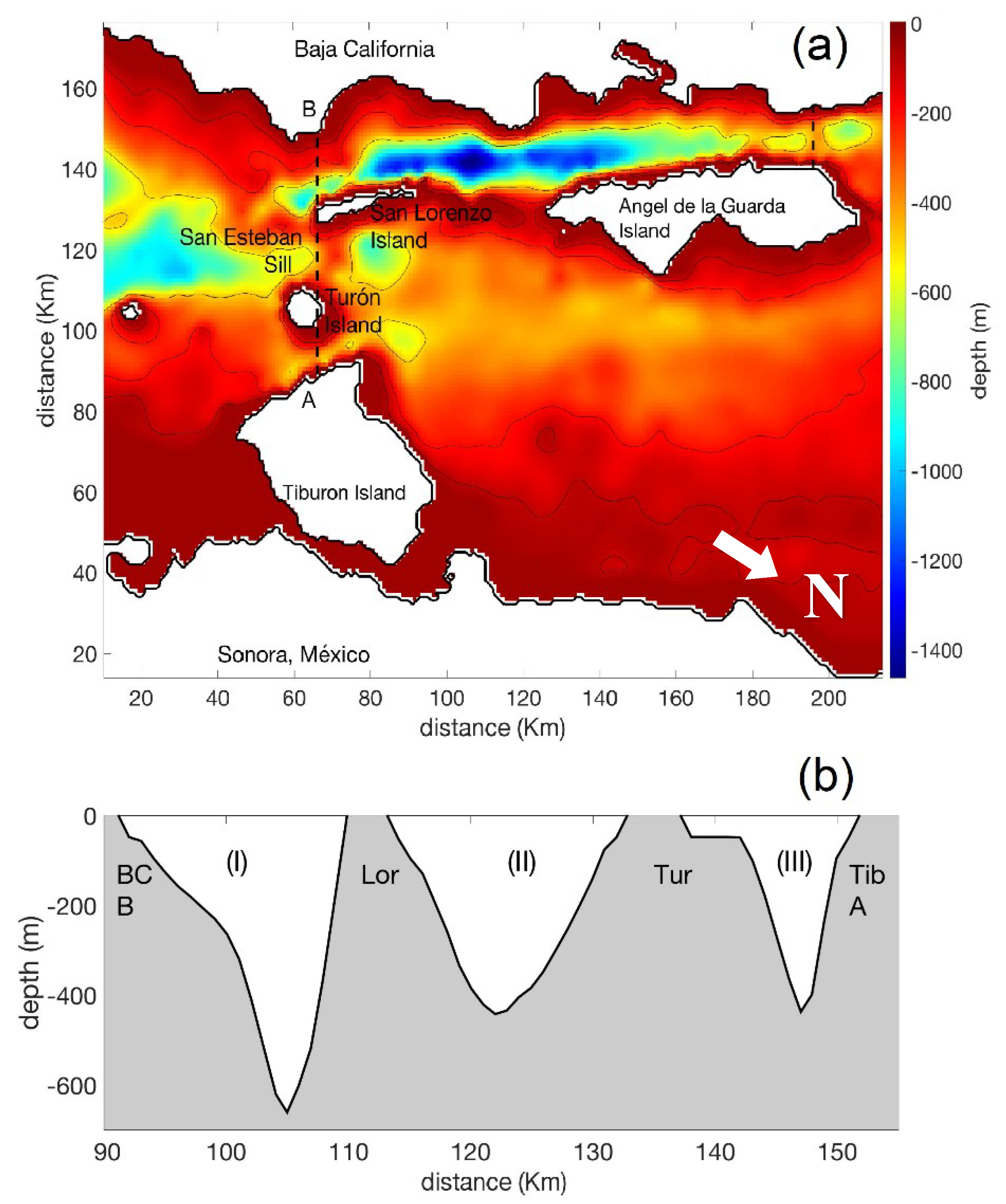
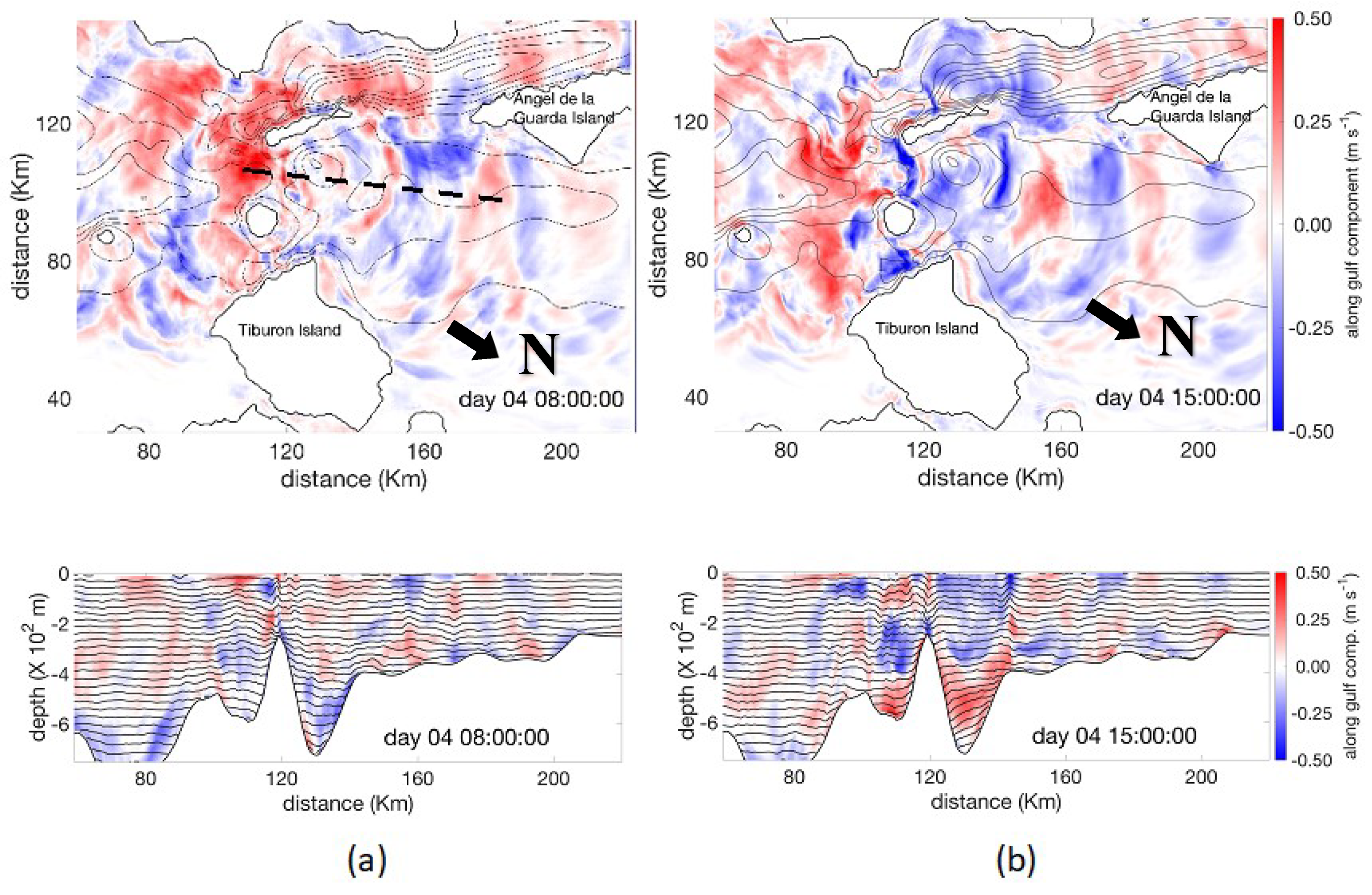

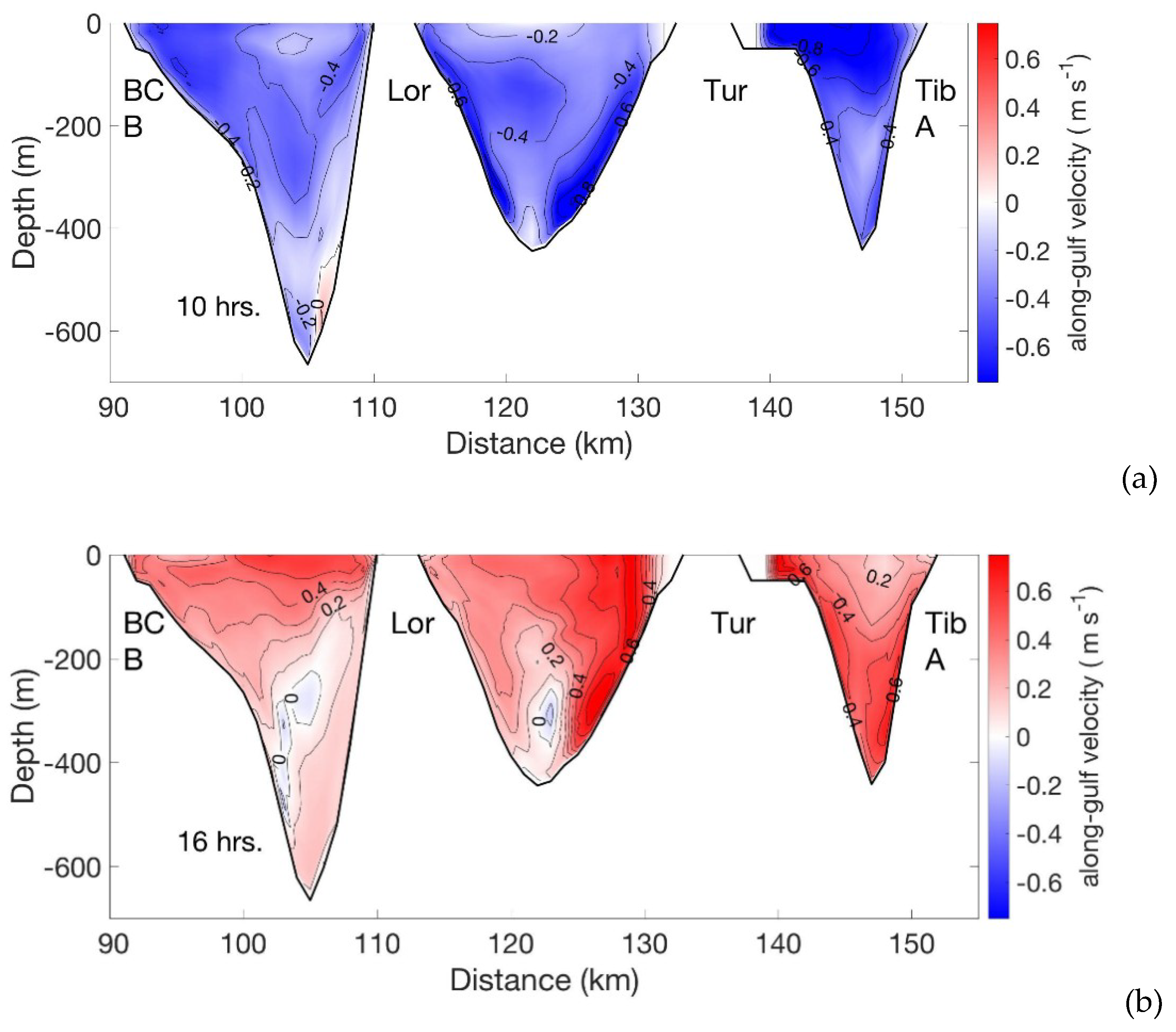
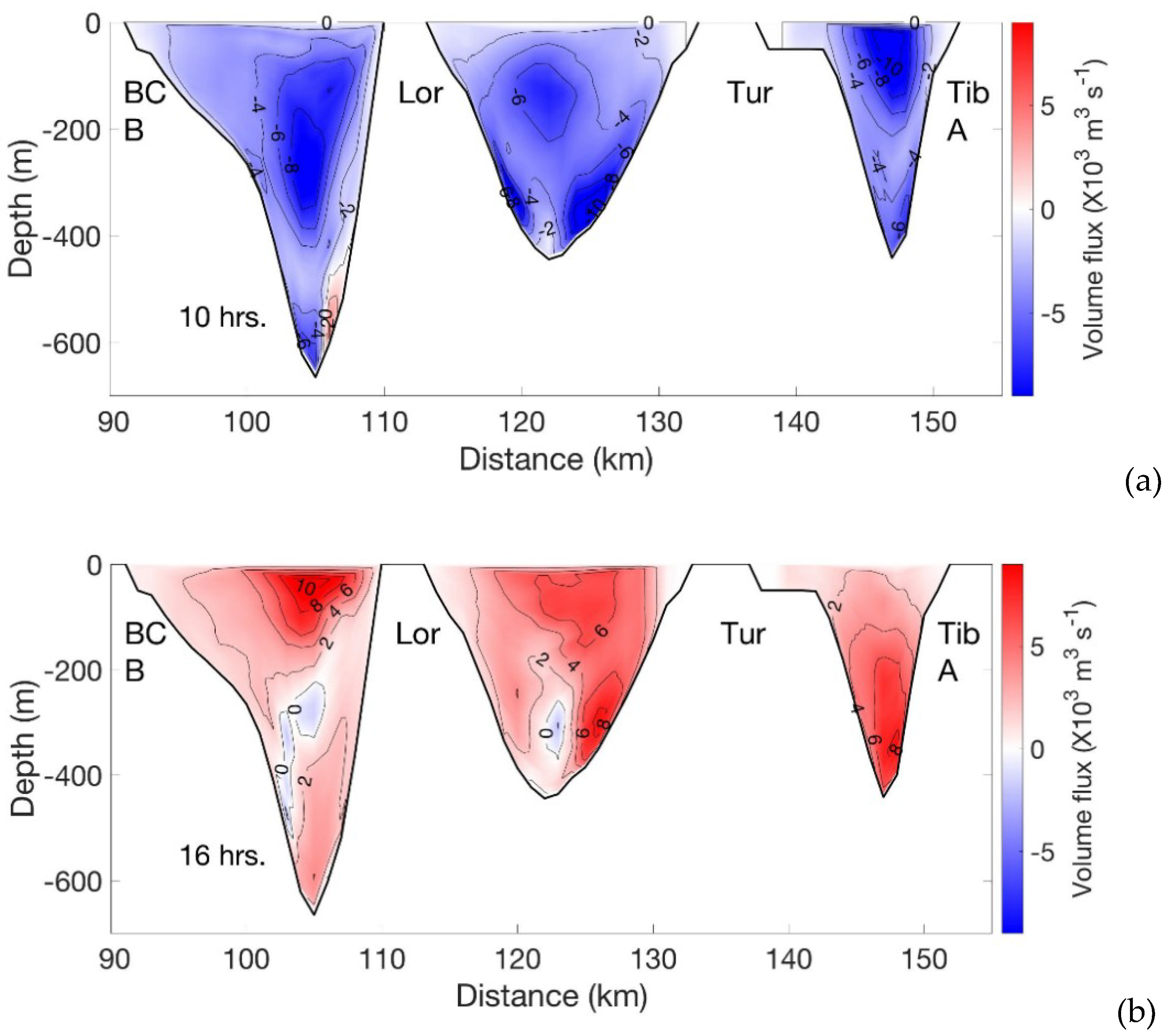
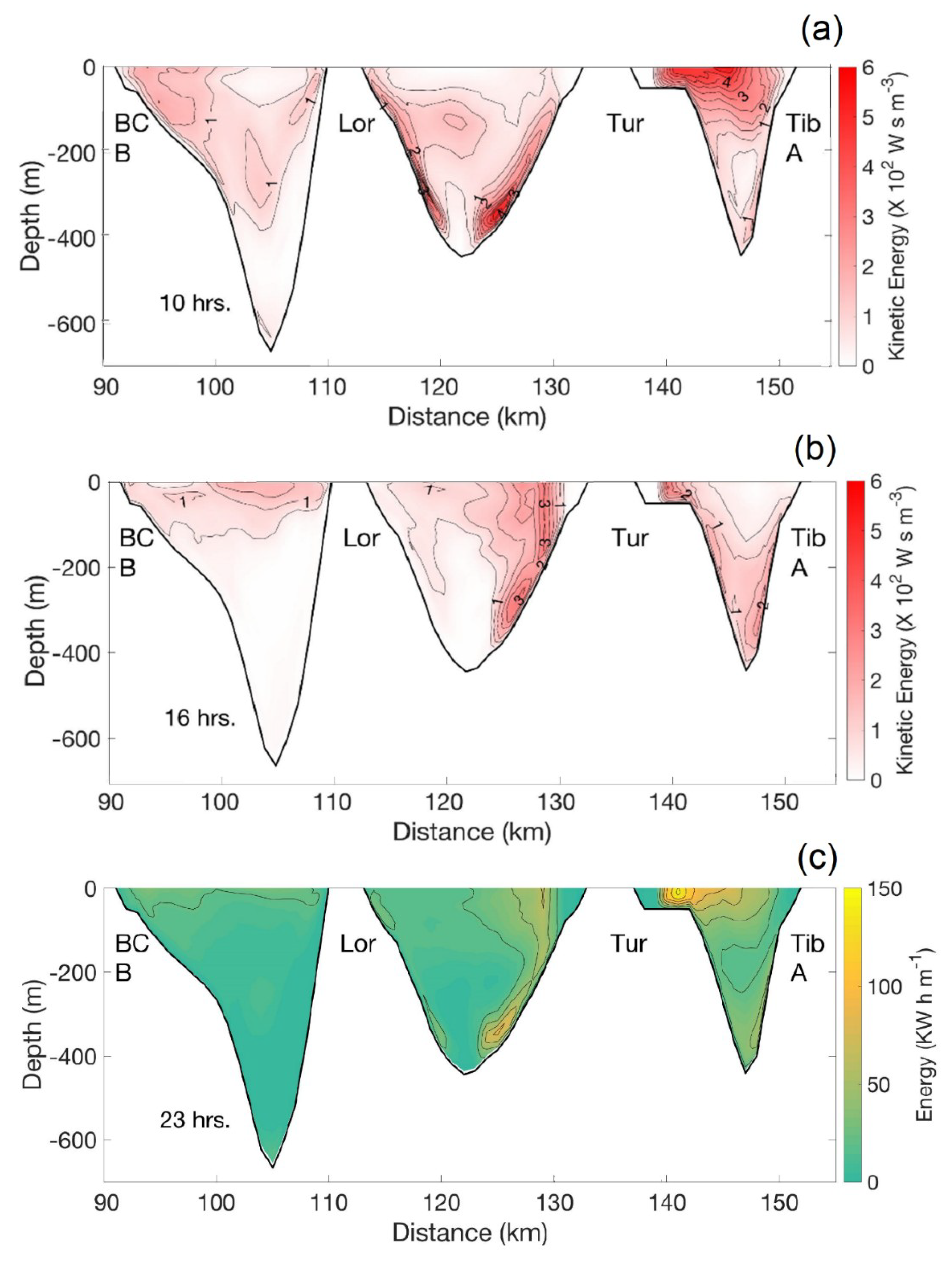
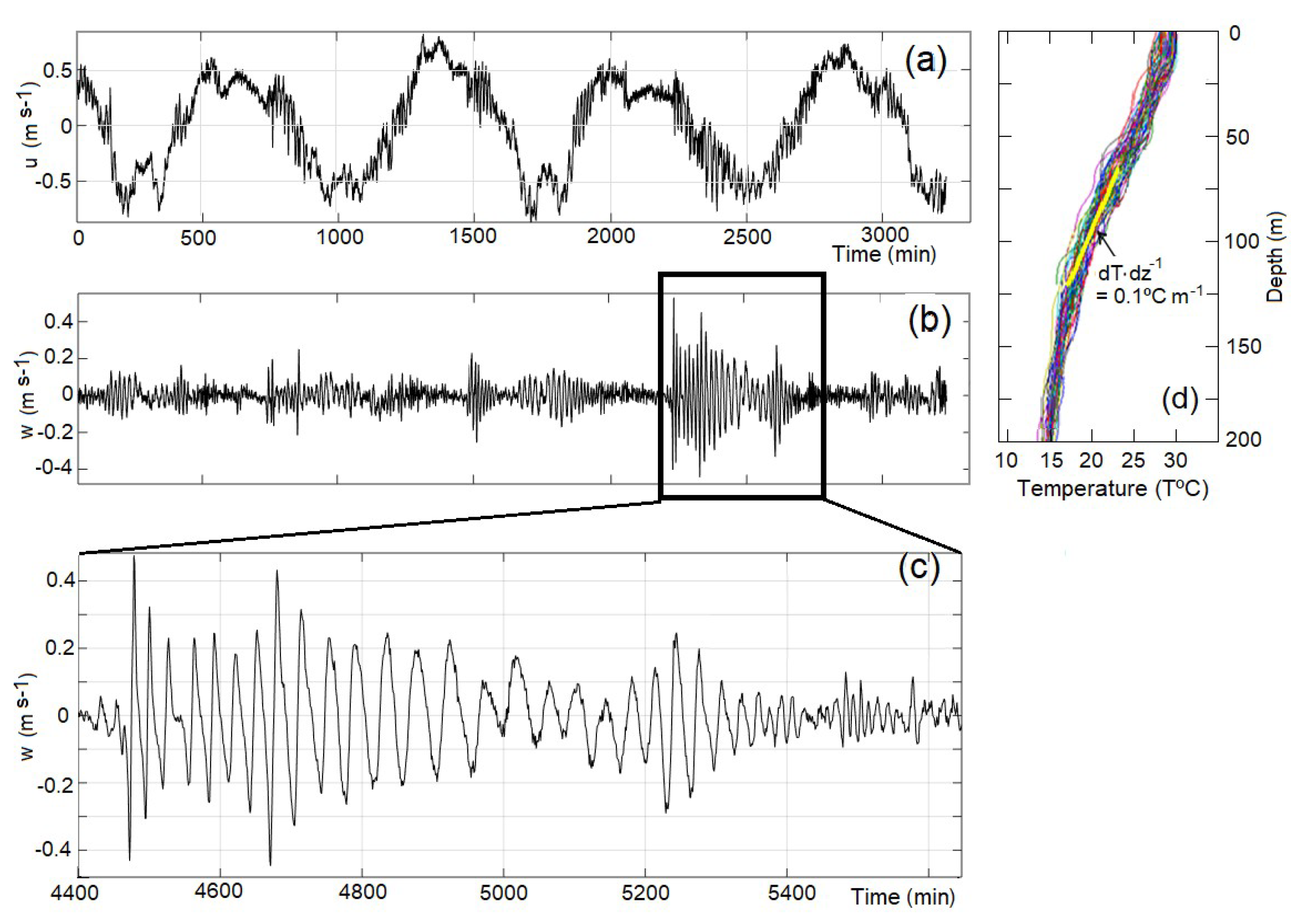
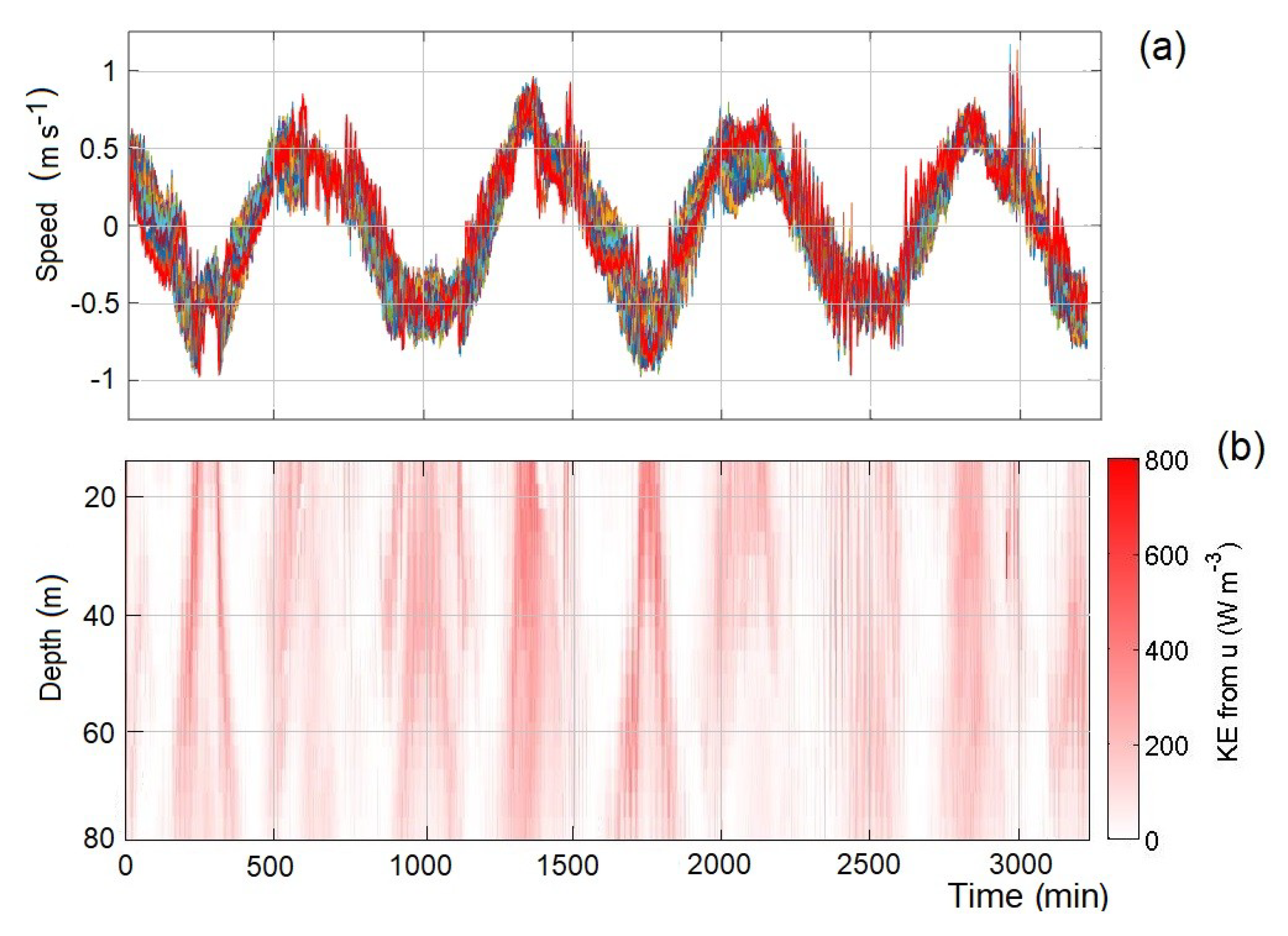
| Section | Area (km2) | Inflow Transport (Sv) | Outflow Transport (Sv) |
|---|---|---|---|
| I | 2393 | 1.13 | −1.05 |
| II | 4924 | 1.75 | −2.07 |
| III | 5580 | 1.39 | −1.53 |
Publisher’s Note: MDPI stays neutral with regard to jurisdictional claims in published maps and institutional affiliations. |
© 2021 by the authors. Licensee MDPI, Basel, Switzerland. This article is an open access article distributed under the terms and conditions of the Creative Commons Attribution (CC BY) license (http://creativecommons.org/licenses/by/4.0/).
Share and Cite
Velazquez-Muñoz, F.A.; Filonov, A. Tidal Energy Flows between the Midriff Islands in the Gulf of California. Energies 2021, 14, 621. https://doi.org/10.3390/en14030621
Velazquez-Muñoz FA, Filonov A. Tidal Energy Flows between the Midriff Islands in the Gulf of California. Energies. 2021; 14(3):621. https://doi.org/10.3390/en14030621
Chicago/Turabian StyleVelazquez-Muñoz, Federico Angel, and Anatoliy Filonov. 2021. "Tidal Energy Flows between the Midriff Islands in the Gulf of California" Energies 14, no. 3: 621. https://doi.org/10.3390/en14030621
APA StyleVelazquez-Muñoz, F. A., & Filonov, A. (2021). Tidal Energy Flows between the Midriff Islands in the Gulf of California. Energies, 14(3), 621. https://doi.org/10.3390/en14030621





